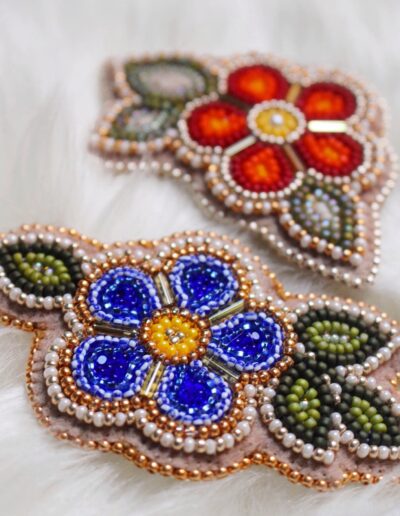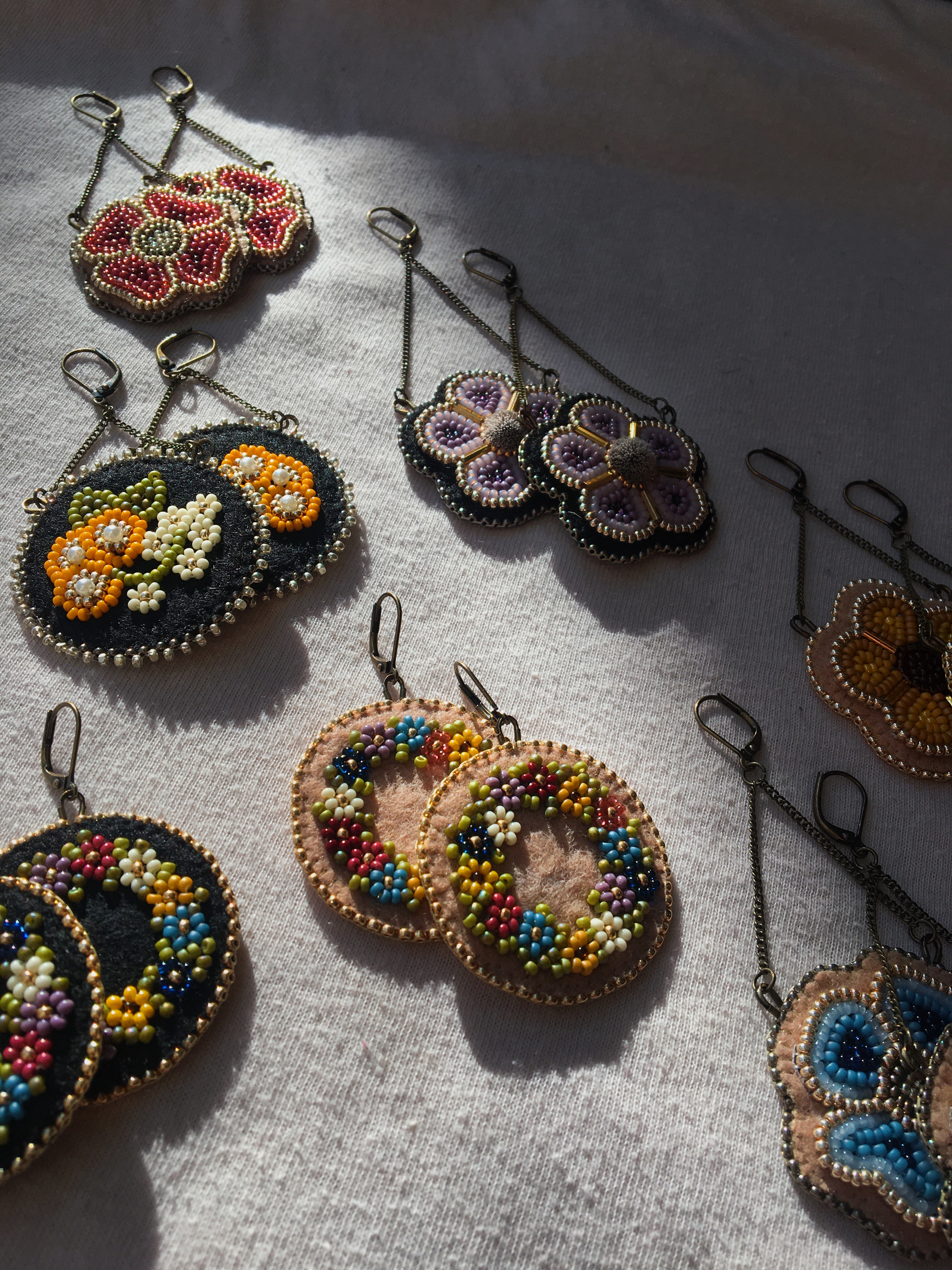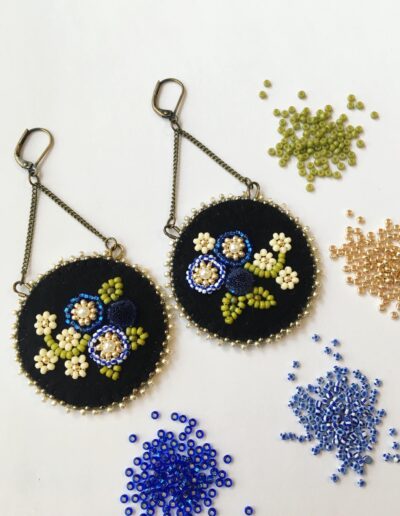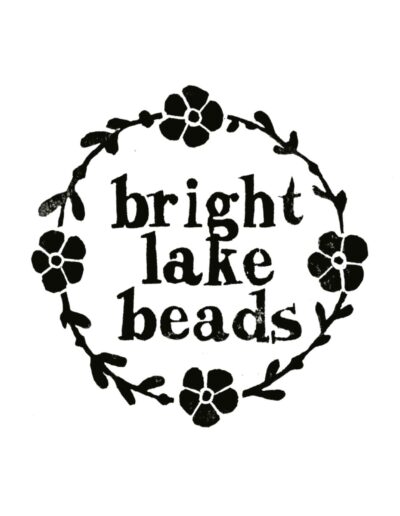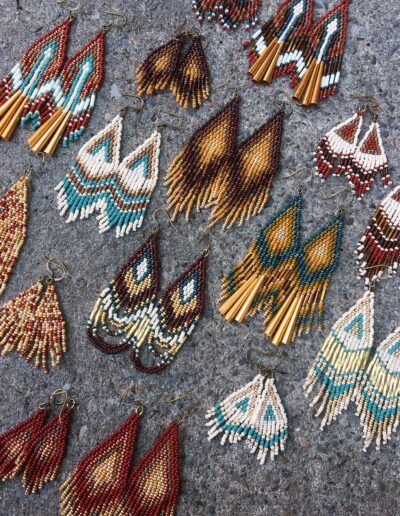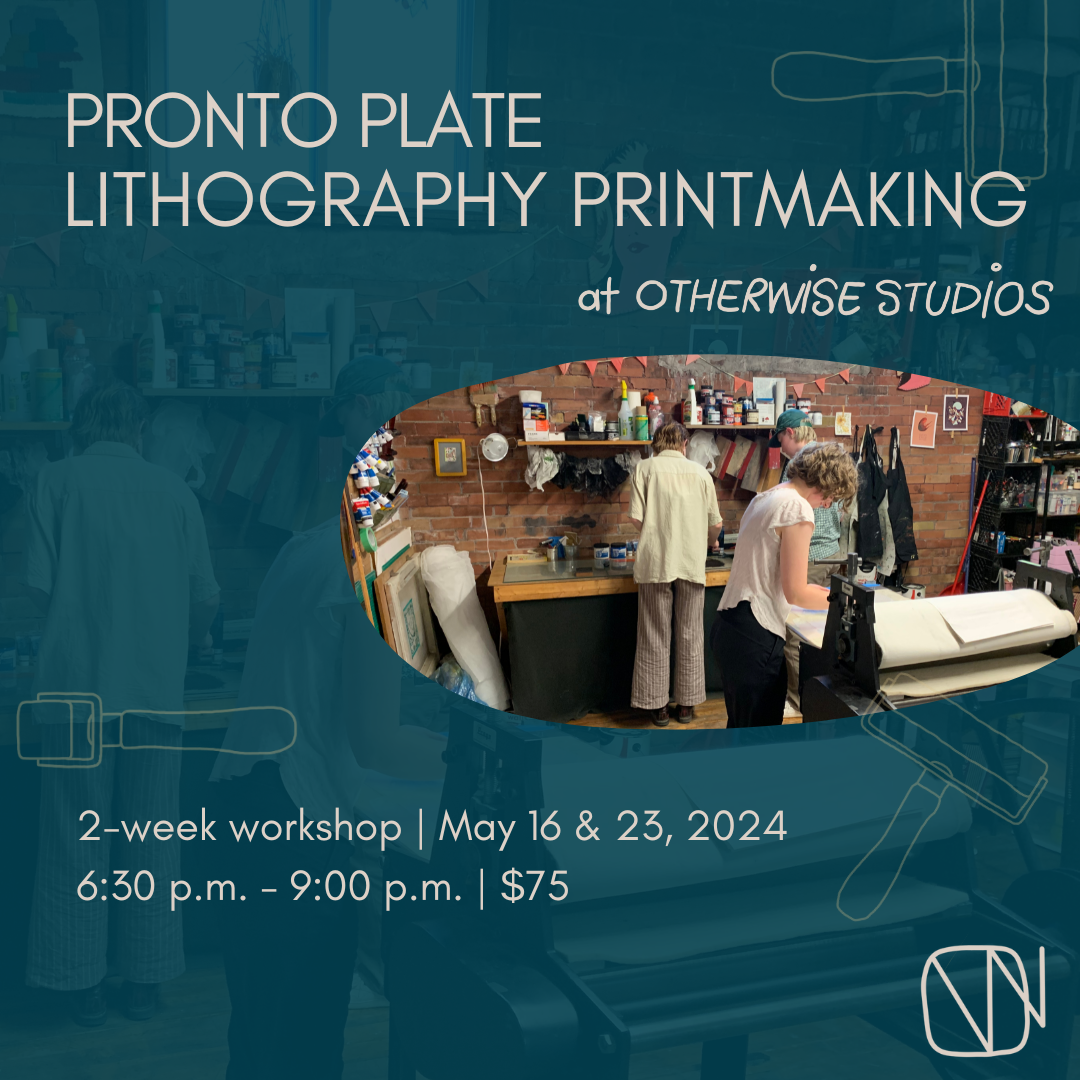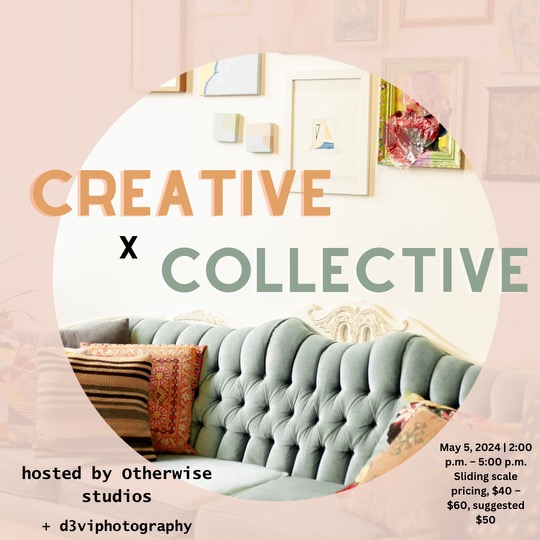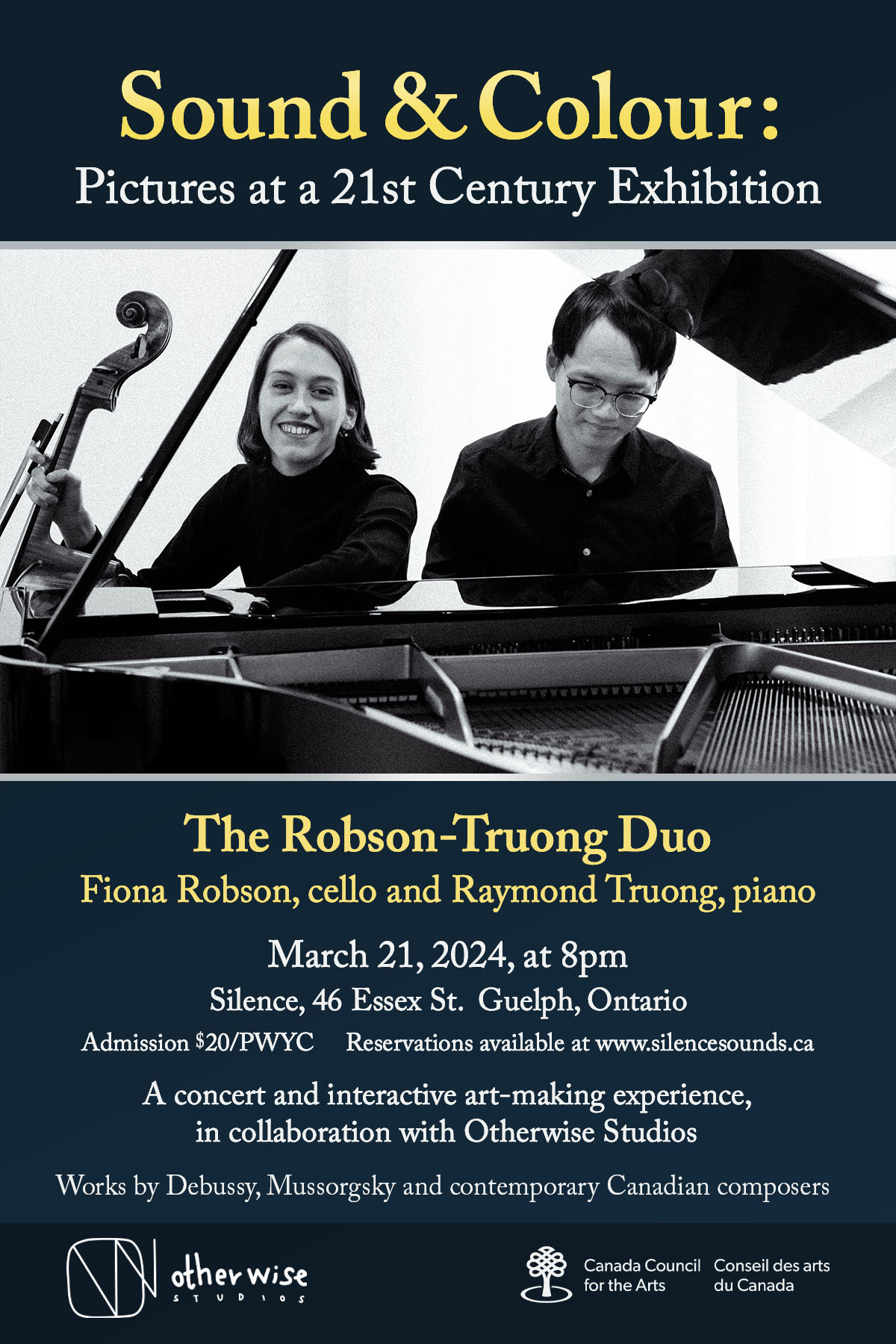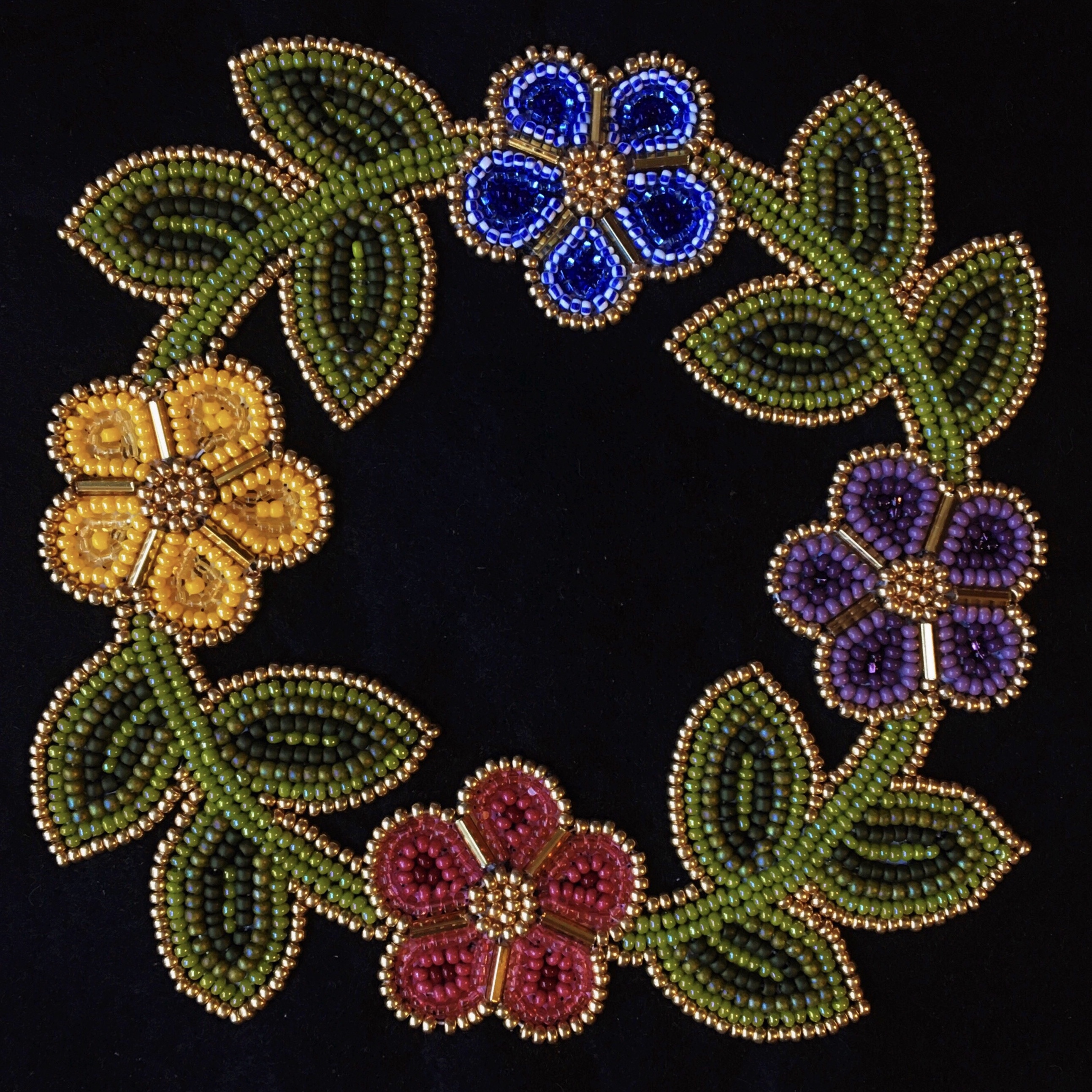
ERIN SZIKORA
Erin Szikora: “A lot of my inspiration comes from the beadworkers who’ve come before me. Beadwork has its roots in demonstrations of sovereignty and friendship, and as such, I find it important to bead in a good way that honours that legacy.”
Erin Szikora is an emerging curator, researcher, and beadwork artist of Cayuga, Scottish, and Hungarian ancestry. She holds a Bachelor of Arts in Art History and Visual Studies from the University of Toronto and a Master of Arts in Contemporary Art, Design, and New Media Art Histories from OCAD University. Currently, Erin is working as an Assistant Curator at the Robert McLaughlin Gallery.
Erin is also having a sale on her Instagram September 12th at 8:00 pm EST.
We had the chance to ask Erin Szikora some questions about her practice to figure out how she works.
It must not be a surprise to know people love your beadwork, but we were wondering if you could speak to the reasoning and backstory of how you decided to get into that form of making.
Beadwork has been a homeward moving practice for me. I’ve always thought of myself as a creative person and as a child I dreamt of being an artist. I took studio art classes in my undergrad and felt quite disillusioned by the “capital A” art scene. Nothing I was making inspired me and working under tight deadlines and assignment parameters didn’t help. I pivoted towards art history and curation and was able to exercise my creativity in a different and really fulfilling way. I missed working with my hands though, and continued practicing what I would call “craft.” I fell into beadwork a little over three years ago after a short stint in embroidery. The two practices are actually quite similar, so it felt like a natural leap. I’m self-taught, which I actually feel quite embarrassed to admit. I’m jealous of those who have learnt from family. Beading, similar to something like quilting, is very much a familial practice. When I bead, I think about my Haudenosaunee relations and the thousands of years that have gone into this practice. There are also rich histories of bead appliqué in Scotland and Eastern Europe. Beading connects me to so much of my being and is so much more than a creative practice to me. The slowness of it is also very meditative and it has helped me process so much of the darkness we’ve seen these past couple of years.
What’s your favourite set up for when you get into making mode – podcasts and tea, sitting outside, watching tv? How do you get into your flow?
I hate to admit it, but true crime podcasts! I bead and listen to them nightly, like clockwork.
Brightlakebeads is such a great handle, how did you arrive at that name?
I struggled for a while not knowing what to call my online account. I started out by posting my beadwork on my personal Instagram, but once I got into a routine of selling my work, I wanted to start a separate page that folks could follow/look to for upcoming sales and announcements. The name, Bright Lake Beads, comes from my favourite place on earth, my family’s cottage just east of Sault Ste. Marie on Bright Lake.
Technical question – because we’re all wondering it – although these pieces are so small, how long does the process typically take you? From designing, selecting your beads, prepping your materials, and all the way to finishing a piece.
Beadwork is a very slow process. When I was first learning, a single flat stitched earring or pin could take me up to two days. Now that I’ve had quite a lot of practice and have experimented with different techniques, a pair of floral earrings takes me around four hours. I never set out to sell earrings, but since beadwork is so time consuming, they are the most marketable product. I really enjoy working on larger pieces, but they would be impossible to sell because it would be very difficult to keep the material and labour costs low.
Do you have a favourite piece you’ve ever made, and did you keep it !?
My favourite piece I’ve ever made is probably the first flat stich patch I completed in the summer of 2019. Looking back, it’s huge! I was inspired by fabric designs and the whole thing easily took me forty or so hours. I backed it with super tough hide I bought second hand at a thrift store. It just sits in a bag of old and unfinished projects. It’s super lumpy and bad, but I remember feeling so proud of myself for finishing it.
You’ve created strawberries, so many beautiful flowers, and even honey bees. When you’re designing the pieces are you consciously choosing these symbols or do you think you naturally gravitate to botanical imagery?
I’d say it’s half and half: half because I love flowers, and half because it’s difficult to do much else on such a small scale. To get any level of real detail, I’d need to work much larger. I also just love their natural colour palette.
What’s a design you’ve been dreaming about making?
I really want to bead a bouquet. I’ve done individual flowers; I’ve done a wreath, now it’s time to think larger. I’ve also dreamt about making a fully beaded bag.
Do you have any inspiration you’re pulling from? Both historical and contemporary?
A lot of my inspiration comes from the beadworkers who’ve come before me. Beadwork has its roots in demonstrations of sovereignty and friendship, and as such, I find it important to bead in a good way that honours that legacy. I’m also inspired by the friends I’ve met online who rally to support one another by organizing raffles and mutual aid, who sell their work on sliding scales, and who share and uplift each other’s work. While the economy of beadwork is equally part of it’s history, I make a point to engage in practices of gifting and trading that combat the ever-prevalent forces of consumer capitalism and to ensure my pieces are landing in good hands.
You have a launch coming out on September 12th at 8 p.m. Since you work in small batches, what is the best way for people to participate and purchase your work?
Beading has really blown up on Instagram lately so unfortunately a lot of the time you just have to get lucky. I usually post about sales a few weeks before they happen. I encourage interested folks to set an alarm and be ready for when the posts go up. I used to take custom orders, but I found it felt too transactional. Working in small batches allows me time to bead for myself, my friends, and my family.
If you weren’t creating through beadwork, what other material do you think you’d be drawn to?
I’ve really been enjoying textile work lately, so if not beadwork, likely embroidery or something along those lines.

